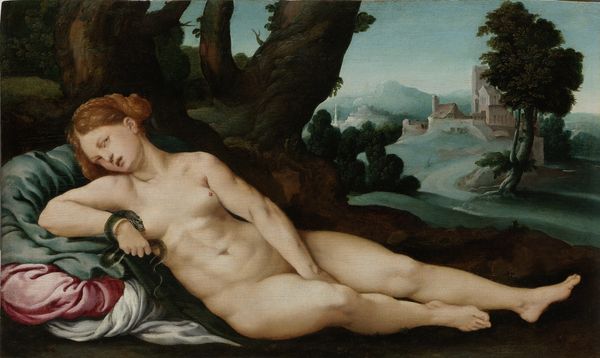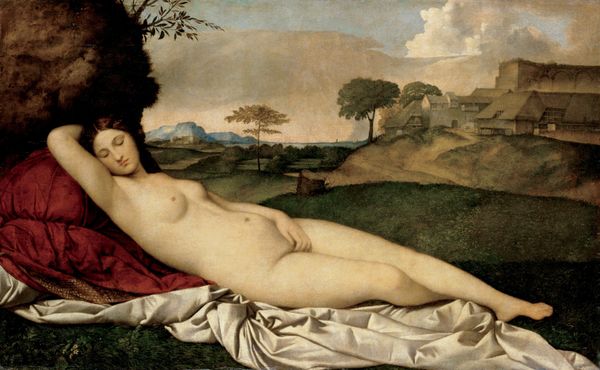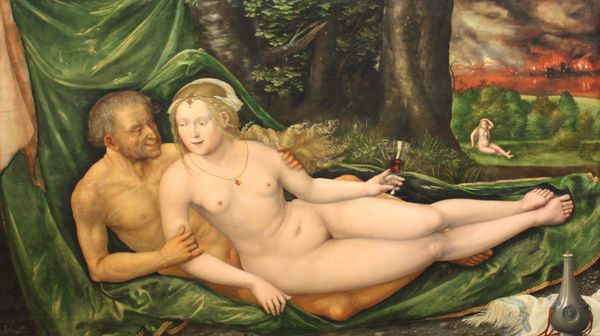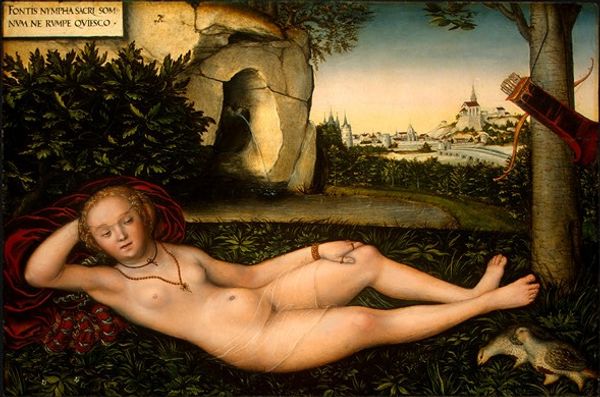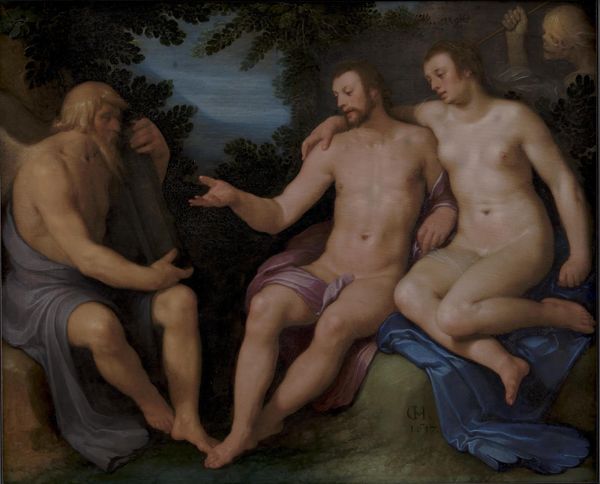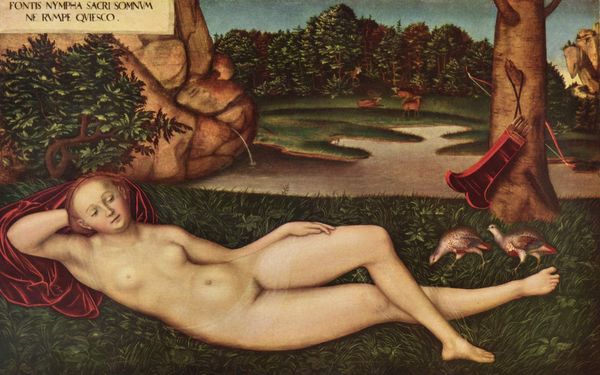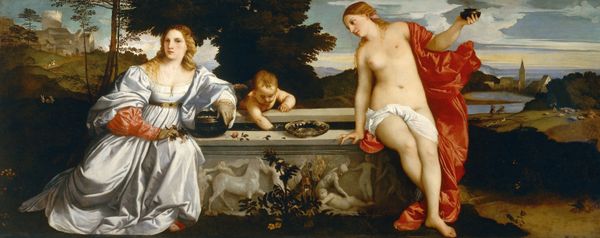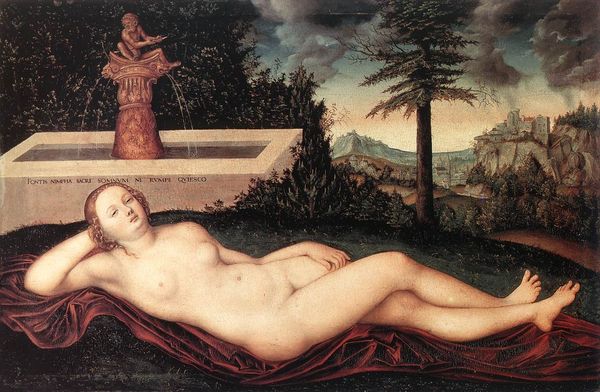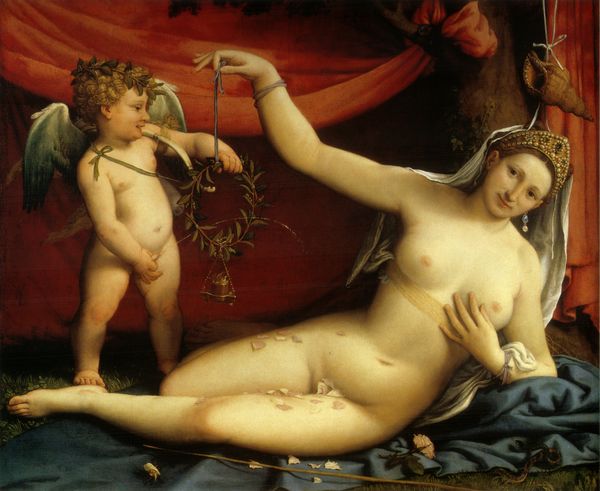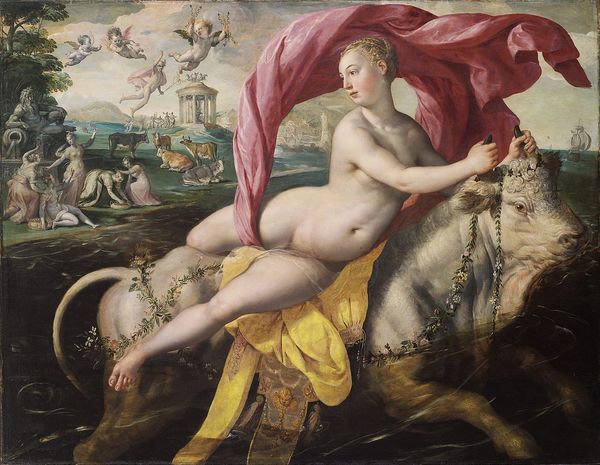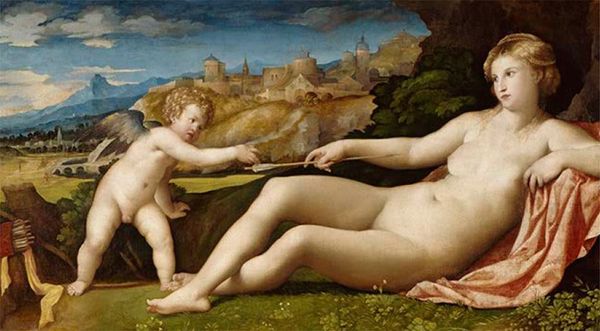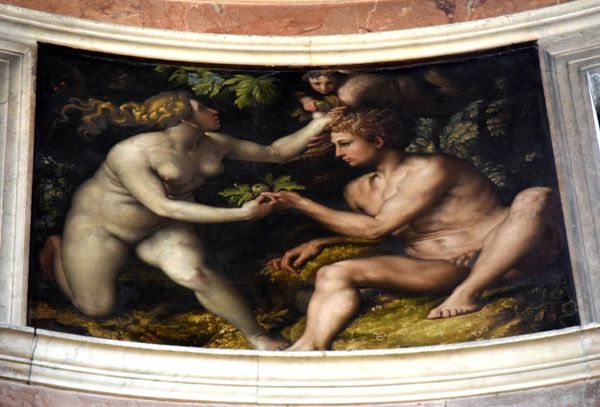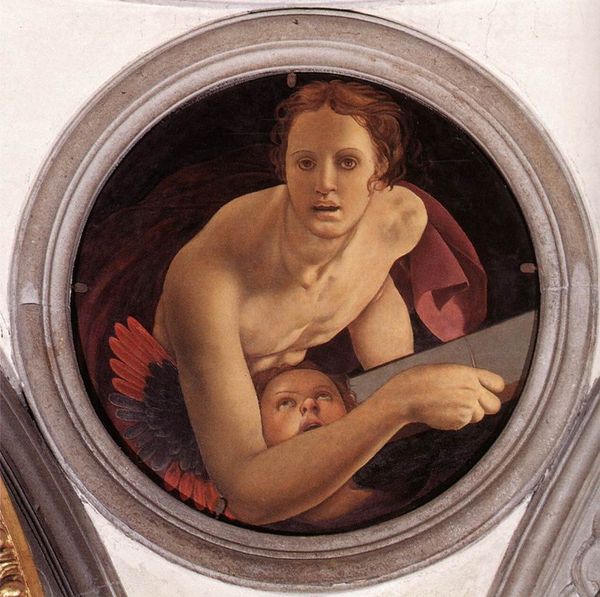
Venus and Cupid in a Landscape 1515
painting, oil-paint
#
venetian-painting
#
allegory
#
painting
#
oil-paint
#
landscape
#
figuration
#
genre-painting
#
italian-renaissance
#
nude
Copyright: Public domain
Palma Vecchio painted Venus and Cupid in a Landscape in Venice in the early 16th century. It represents ideas about female beauty, eroticism, and idealised nature that were circulating among Venetian elites at the time. The painting presents Venus, the goddess of love, in a serene landscape. The way she reclines, half-draped, and the presence of Cupid with his bow, are visual cues that create a sense of sensual invitation. The landscape serves as a backdrop but also hints at the vast estates and cultivated gardens owned by wealthy Venetians. Venice was a major centre for trade and culture, so this imagery served the fantasies and self-image of its ruling classes. The display of wealth and beauty also reflected the patron's aspirations and social status within Venetian society. Historical records, such as diaries, letters, and inventories, can shed light on the painting's original audience and how it was received in its time. This allows us to view art as embedded in specific social and institutional contexts.
Comments
No comments
Be the first to comment and join the conversation on the ultimate creative platform.

